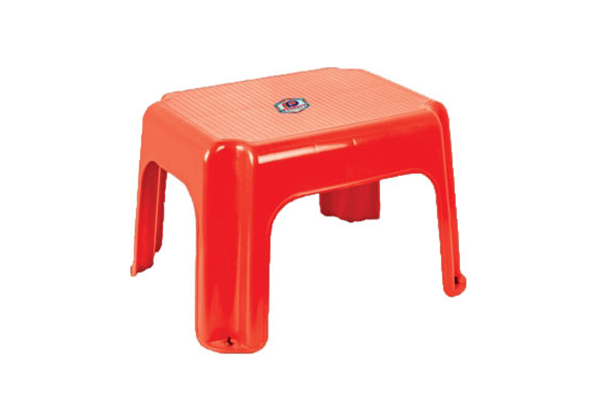A step stool is a practical and essential piece of furniture used in homes, offices, and industrial settings. It provides extra height for reaching high places, making it an invaluable tool for children, adults, and even professionals. Choosing the best material for a step stool depends on factors like durability, weight capacity, portability, and aesthetics. In this article, we will explore the most common materials used in step stools and their respective advantages and disadvantages.
1. Wood
Advantages:
- Aesthetic Appeal: Wooden step stools offer a classic, warm, and natural look that blends well with home interiors.
- Durability: High-quality hardwoods like oak, maple, and walnut can support substantial weight and last for years.
- Stability: Wooden step stools tend to be heavier, providing a stable base that prevents wobbling.
- Customization: Wood can be painted or stained to match home decor.
Disadvantages:
- Weight: Wooden step stools can be heavier than other materials, making them less portable.
- Moisture Sensitivity: If not properly sealed, wood can absorb moisture, leading to warping or rotting over time.
- Maintenance: Requires regular upkeep, such as polishing or refinishing, to maintain its look and strength.
2. Plastic
Advantages:
- Lightweight: Plastic step stools are easy to carry and move around, making them ideal for quick tasks.
- Water Resistance: Unlike wood, plastic does not absorb moisture, making it perfect for use in bathrooms and kitchens.
- Affordability: Generally, plastic step stools are more cost-effective than their wooden or metal counterparts.
- Variety: Available in multiple colors and designs to suit different preferences.

Disadvantages:
- Less Durable: Plastic may crack or break under excessive weight, especially if not reinforced.
- Environmental Impact: Most plastics are not biodegradable, posing an environmental concern.
- Lower Aesthetic Appeal: While functional, plastic step stools may not be as visually appealing as wood or metal options.
3. Metal (Aluminum or Steel)
Advantages:
- Strength and Durability: Metal step stools, especially those made of steel, can handle heavy weights and last for years.
- Lightweight (Aluminum): Aluminum step stools are both strong and lightweight, making them easy to transport.
- Resistance to Elements: Metal stools with anti-rust coatings are ideal for outdoor and industrial use.
- Compact Design: Many metal step stools have foldable designs, making storage easy.
Disadvantages:
- Cold to Touch: Metal surfaces can feel cold, especially in cooler climates, making them uncomfortable to use.
- Potential Rusting: If not properly coated, steel step stools can rust over time.
- Slippery Surface: Some metal step stools may require additional grip features, such as rubberized steps, to prevent slipping.
4. Composite Materials
Advantages:
- Best of Both Worlds: Composite materials, such as fiberglass or a mix of wood and plastic, offer a balance between strength, durability, and weight.
- Moisture and Weather Resistance: Unlike wood, composites do not absorb water or rot.
- Variety of Designs: Can be molded into different styles and shapes for aesthetic appeal.
Disadvantages:
- Cost: Composite materials can be more expensive than traditional wood, plastic, or metal options.
- Weight: Some composite materials can be heavier, affecting portability.
Conclusion
The best material for a step stool depends on its intended use. For a home setting with an emphasis on aesthetics, wood is an excellent choice. If portability and affordability are top priorities, plastic is a practical option. For industrial or heavy-duty use, metal provides superior durability and strength. Finally, composite materials offer a versatile alternative for those looking for a balance between durability and lightweight convenience. Ultimately, selecting the right material ensures safety, functionality, and longevity in a step stool.
Post time: 02-08-2025



